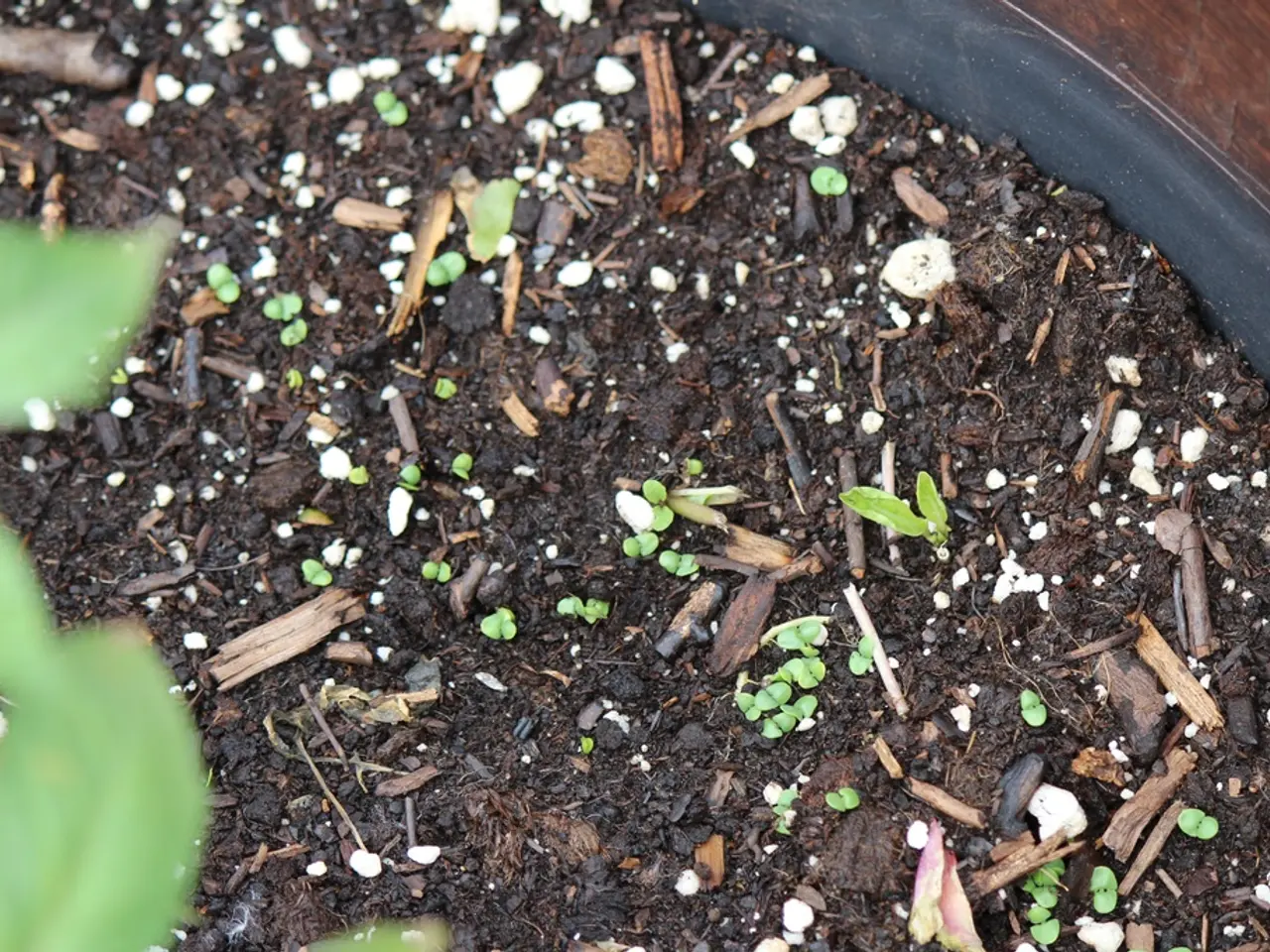Agricultural Use of Gypsum in Ohio: Sources and Quality of Offered Materials
In Ohio, synthetic gypsum has emerged as a promising soil amendment, offering numerous benefits for the state's soils. This by-product, often referred to as flue gas desulfurization (FGD) gypsum, is produced at coal-fired power plants as part of pollution control measures.
The optimal application rates for synthetic gypsum in Ohio typically range from 1 to 5 tons per acre, depending on soil conditions, crop needs, and existing calcium and sulfur levels. Lower rates might be used for maintenance or minor corrections, while higher rates can address significant soil compaction, sodicity, or sulfur deficiency issues.
When it comes to best practices for application, soil testing is crucial to determine calcium, sulfur, pH, and sodium levels before application. This allows for tailoring gypsum amounts appropriately. The ideal time to apply gypsum is in the fall or early spring before planting, enabling it to dissolve and interact with soil particles. For best results, gypsum should be worked into the root zone if possible, though surface application is common.
Environmental considerations are also important. Overuse can lead to runoff concerns and soil imbalances, so adhering to recommended rates is essential to minimize environmental impacts. Ohio regulations emphasize reducing off-site movement of amendments like FGD gypsum.
Synthetic gypsum improves soil physical properties by reducing compaction and improving water infiltration. It also provides essential nutrients often deficient in Ohio soils, such as calcium and sulfur. By displacing sodium in sodic soils, gypsum can mitigate soil dispersion and improve structure and permeability.
Recycled drywall gypsum is another source of gypsum available for agricultural use in Ohio. However, it contains other chemical compounds such as portlandite and calcite, which may not make it suitable for all agricultural uses.
In conclusion, synthetic gypsum offers a valuable solution for improving Ohio soils. By following optimal application rates and best practices, farmers can support soil health, plant productivity, and environmental stewardship. For exact local guidelines, contacting Ohio State University Extension or local agronomy experts is recommended, as they can provide region-specific recommendations based on current research and soil types in Ohio.
- The nutrients provided by synthetic gypsum, including calcium and sulfur, are essential for crop production in Ohio, supporting the growth and health of its crops in the agriculture industry.
- Adhering to recommended application rates for synthetic gypsum, such as 1 to 5 tons per acre, is crucial to ensure crop production while minimizing environmental impacts related to runoff and soil imbalances.
- By improving soil physical properties, such as reducing compaction and enhancing water infiltration, synthetic gypsum can address soil compaction, sodicity, or sulfur deficiency issues, ultimately contributing to better crop production and nutrition.
- In the industry of environmental science, understanding the optimal application and best practices for synthetic gypsum is crucial to ensure its positive impact on the environment and compliance with Ohio regulations, which focus on reducing the off-site movement of amendments like FGD gypsum.




